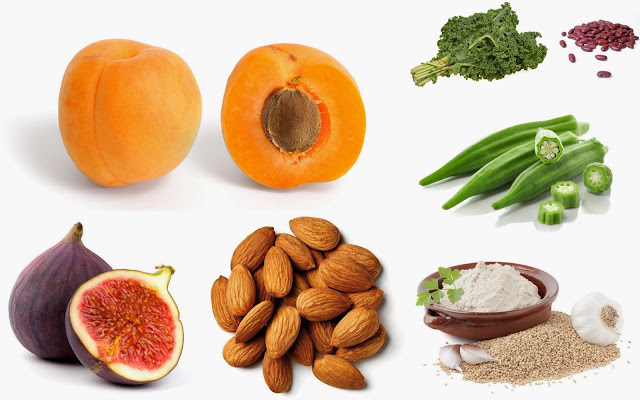The most popular question for those who eat plant-based foods is about protein - is it possible to satisfy the body's need for protein by giving up animal foods? In other words, are plant-based sources of calcium effective? I published the answer to this a few months ago.
The second most popular question is about calcium. "You don't drink milk or eat dairy products - what about calcium, because there's nowhere else to get it?" This is yet another myth, and, as it turns out, has long been safely dispelled by scientists. Surprisingly, the fact is that milk has the opposite effect - it destroys bones and increases the risk of serious injuries. But where to get this essential mineral if you don't drink milk or consume other products based on it? The answer is simple - those plant foods high in calcium come to the rescue.
For bone health, not only the amount of calcium consumed is very important, but also how much calcium for various reasons (diet, lifestyle, health in general) is flushed out of the body. We can take these factors under control and minimize the loss of this macronutrient.
Almost all calcium in the body is concentrated in the bones. A small amount is found in the blood and is responsible for essential functions such as muscle contraction, maintaining the heartbeat and transmitting nerve impulses.
We regularly lose calcium from the blood through urine, sweat, and feces. The body can compensate for this loss with a portion of calcium from the bones and from food. This is where people who have decided to choose vegetarianism get the question of what plant foods contain calcium.
Bones are constantly being broken down and rebuilt. In people under the age of about 30, bones recover more vigorously than they break down. After the age of 30, the situation gradually changes: they begin to break down faster than they regenerate. The loss of too much calcium from the bones can lead to their significant weakening and even the development of osteoporosis.
A number of factors affect the body's loss of calcium:
Diets high in protein increase the excretion of calcium from the body with urine. Protein from animal products accelerates calcium excretion more than protein from plant foods. This may be one reason why vegetarians (whose diet is based on calcium-rich plants) tend to have stronger bones than meat-eaters.
Diets or regular diets high in sodium (hard and soft cheeses; smoked meats; canned fish, meat and vegetables if salt is used as a preservative; seafood cooked with salt; fried nuts; instant soups; stock cubes; chips) increase calcium excretion with urine.
Caffeine, which is mainly found in tea and coffee and, in smaller amounts, in chocolate and some pain medications, accelerates calcium excretion in the urine. In addition, according to new foreign studies, women who drink several cups of coffee a day (3-4) during menopause and in old age risk noticing an increase in bone fragility, and "getting to know" osteoporosis.
4. Smoking leads to a large loss of calcium. This is mainly due to a decrease in the level of female sex hormones - estrogens. Their shortage does not affect the ability of bone tissue to absorb calcium in the best way.
A number of factors contribute to the restoration of the bone system:
Physical activity is one of the most important factors in maintaining bone health.
Exposure to sunlight promotes the body's production of the hormone vitamin D, which is essential for bone building.
A diet rich in fruits, vegetables, and greens helps keep calcium in the bones. Calcium consumed from plant sources, especially green vegetables and legumes, is essential in building bones.

Calcium in plant foods is by no means utopian, as it may seem to people who believe that dairy products are the only significant source of this macronutrient. It is not that difficult to find calcium in plants.
And besides, plant foods often contain not only as much calcium as animal diets, but even more. Soybeans, bok choy, broccoli, browncorn (kale), Chinese cabbage, kale, mustard greens, sesame, nut milk, broccoli, okra, almonds, beans and many other foods are rich in it. Study this detailed list and you will know the answer to what plants contain calcium:
Browncorn (kale) (1 cup* contains 180 milligrams of calcium)
Scientists have proven that calcium "native" to browncool is much better absorbed than calcium "of dairy origin."
Leafy Cabbage (1 cup - more than 350 mg)
You might be surprised, but there is more calcium in a cup of leafy kale than in a cup of milk!
Turnip greens (1 cup - 250 mg)
Often turnip dishes (particularly turnip greens) are recommended by experts to make people with osteoporosis and osteochondrosis the main thing in their diet. The reason for this is the solid calcium level in the composition.
Tahini (2 tablespoons - 130 mg)
Another bonus of the fatty ground sesame seed paste is the ease of incorporation into the diet. Tahini just needs to be spread on toast, and the calcium is in your "pocket."
Hemp Milk (1 cup - 460 mg)
Protein, calcium, and 9 essential amino acids - this is what hemp milk boasts.
Almond oil (2 tablespoons - 85 mg)
Basically, it's not even that important what will figure in your diet - nuts, milk or almond oil. The important thing is that in addition to calcium, this product is high in magnesium and fiber.
Soybeans (1 cup - 175 mg)
Soy is both a plant protein and a calcium-rich plant. Keep this in mind when deciding what to replace meat and dairy products with.
Broccoli (1 cup - 95 mg)
In addition to a solid bonus in the idea of calcium, broccoli boasts an equally weighty vitamin C rating in its composition (cabbage has twice as much as oranges).
Raw fennel (1 medium tuber is 115 mg)
Fennel has virtually no contraindications (except for individual intolerance), plus it contains a solid portion of B vitamins (B1, B2, B3, B5, B6, B9).
Blackberries (1 cup - 40 mg)
Women should include blackberries in their diet not only because of the tandem of calcium and magnesium, but also because of the fact that this berry alleviates the symptoms of PMS and menopause.
Blackcurrant (1 cup - 62 mg)
Black currants are called the record holder among berries for vitamin C content.
Oranges (1 orange is 50-60 mg)
Osteoporosis has a second name - "scurvy bones." Oranges, which are rich not only in vitamin C but also in calcium, are an excellent preventative against joint disease.
Apricots (1/2 cup - 35 mg)
A dried apricot is considered a healthy food because it has much more calcium salts than sodium.
Figs (1/2 cup - 120 mg)
Don't like to eat them as a dessert for tea, add them to a salad of greens, or oatmeal. Just don't ignore it, because half a handful of figs has more calcium than a glass of milk.
Dates (1/2 cup - 35 mg).
If you're not only looking for plant foods high in calcium, but also foods that are great for satisfying hunger at the same time, look no further than dates.
Artichoke (1 medium artichoke is 55 mg)
Mineralizing bone and strengthening it is something the artichoke has been famous for since the days of ancient Egypt.
Adzuki beans (1 cup - 65 mg)
Adzuki beans are called the Japanese superfood because its fruits not only contain calcium, a macronutrient precious to bones, but they are also a great source of plant protein.
White beans (1 cup - 125 mg)
100g of white beans contain almost 20% of your daily calcium allowance. But especially valuable is the fact that these legumes also contain magnesium. Calcium and magnesium guard our bones.
Amaranth (1 cup - 275mg)
When asked "What plants have a lot of calcium," in most cases one of the first things you will hear is amaranth. However, amaranth is one of the record-breakers in terms of not only calcium content. Its leaves contain a huge amount of vitamins and minerals.
Carrots (200 g - 60 mg)
Experts assure that, unlike milk, calcium from carrots is absorbed almost completely.
The daily requirement of the body in calcium - 1000 milligrams.



You must be logged in to post a comment.